Tonight is the night, baby!
Over the past month, the Tedder House, at 26 Augusta Street, Llandudno, has been brought back to life by thirteen creatives. Every room now contains something different and stimulating, as the artists complete their installations ready for tonight’s official launch, heralding the start of the Llawn03 Arts Festival this weekend. (Come and see for yourself!) All the work in ‘da haus’ has grown and developed since the overview I offered in part 2 of these journals, and some that was not then tangible has now taken definite form.
I have been there all along - as writer in residence - to witness, document and, in my own way, create some sort of ART:
I have responded to the people, the place and its past in my own way using words - like the ones you are reading – as my primary medium. A portion of my responses have emanated from within the house via the ether and now my words, about there, appear here - on the World Wide Web. This has been one response: ‘writer-as-commentator’, setting down a document of the art and artists.
My Haus of Helfa space has, of course, been in the bar - an architecturally re-imagined environment composed of furniture, and imagery, reclaimed from local, derelict ‘has-been’ hotels. The work I had hung on the walls, the ‘calligraphy’ scrolls, were at odds with this ‘strategy against architecture’ and so they have now been assembled into book form, as befits a writer! This ‘book’ is a record of my exploration into where art and writing meet, creating a no-man’s land between the artificial borders that are sometimes perceived to separate the two.
It has been an on-going experiment throughout the residency - an attempt to exploit the visuality of writing as a form of drawing. Using the same pathways - from mind, through brain, to hand - as the written word: utilising those same life-long conditioned hand-writing reflexes, whilst avoiding the deliberate formation of word-language. Creating a unique visual language of mark-making that shares many formal elements with writing, and may express ideas and emotions in a similar way, without the encumbrance of literal meaning… and perhaps avoiding the cultural dogma often attached to words and languages. One perceptive visitor described this as, "a tiny form of dance, recorded visually".
 |
| Writing to escape the words... pages from SCANNER / PRINTER, a book by Remy Dean, exploring the visuality of the gesture in writing as a form of drawing |
Kazimir Malevich made what is probably the bravest and boldest attempt to circumvent these problems by reverting back to the basic forms he used as a language. With his Black Square, circa 1913, he made art into the thing, in itself. Instead of representing a real world object, his art became an object that presented its own concept, not re-presenting another. You can read more of my thoughts on this here. Graphic design guru, David Carsen, has also pointed out that 'legibility' and 'communication' are not always the same thing.
I have also been exploring different ways of telling stories, using notations, images, interactions and artefacts alongside traditional text. Perhaps my admiration for the late, great Joseph Beuys has led to the outcomes now being exhibited in a museum-style ‘vitrine’, which you will find in the big bay window of the bar area. (This is the only surviving piece of original furniture belonging to the Tedder House and was also used to good effect in Alan Whifield’s video installation, last year.)
 |
| 'Corky' and his cicorc chums in situ at the bar, earlier... |
Within the coffin-like glass ‘tank’, you will see some other artefacts that relate to my #WordsOnWednesday series published via twitter @DeanAuthor every week during the residency.... and, there is still time for visitors to add their own words to the postcard gallery.
...and now, from me to -
The work of Iwan Lewis has now fully occupied his space. Iwan is primarily a painter, or perhaps a poet of paint. He has produced a series of pictures that run in a loose, dream-like narrative. The story they tell seems to suggest nostalgia and fantasy, appraising the similarity of the two. Were those times that provoke nostalgia actually as we recall them, or have they been lightened - or even darkened - by the touch of our own memory brushes?
 |
| Memories are made of... Iwan Lewis worked in and with the room |
Ronan Devlin, possibly best known for immersive and interactive art using light, has installed a pair of sculptural pieces. Light is conducted up through perspex panels, interrupted by the laser-etched patterns embedded in them. The illumination changes colour to a rhythm that draws our attention to the rhythm of the compositions carried on the otherwise clear surfaces. One is a geometric series of forms that interplay from one layer to next, creating interference patterns that respond to the individual position of the viewer, and change as they move towards or around them.
 |
| Ronan Devlin using LLight and pure pattern - that's a moiré (photograph courtesy of the artist) |
Ronan has placed his works at one end of the large blacked-out room that is half taken up with Neil Coombs' Lost Infinities: These four, fish-tank-like, glass cubes now contain magical illusions that challenge the audience to re-assess how they see 'reality'. One of the images we see within each of the cleverly mirrored light-boxes is the ‘real thing’, but receding away in all directions are infinite copies that exist as light, without substance. These ‘copies’ seem to spill out across the real space inhabited by the viewers, passing through and beyond their bodies, but cannot be touched. The real objects cannot be touched because of the invisible glass panels, which we are made aware of by their slicing-up of the repeated reflections. Clever and fun.
 |
| Neil Coombs - boxes of delight. ? tsrif emac hcihW |
Another cube shows us books, starkly lit by a bare light bulb, reflected to infinity in all directions, the text on the book jacket flipping and reversing as it recedes. Another box has a tiny tableau set in a cemetery where something mysterious is happening as the walls are stormed by protesters, who find death offensive – this beautifully crafted piece reminded me of the sense of dramatic wonder conjured in the work of photographer Gregory Crewdson.
Neil’s final magic box contains a single egg. Is this an incubator of ideas? In place of a heat lamp, a projector shines down brashly coloured collages from above. Images, interrupted by the ovoid form, dance across the surfaces at a frenetic pace and then reflect off to infinity. I am sure Neil will not mind me pointing out that the egg is a well-established symbol in Surrealism, because it hints at things yet to come, the beginnings, the unformed idea of a thing. From the egg, something will emerge that has never been observed by anyone before… It is also an ancient symbol of resurrection (hence Easter eggs) which follows on nicely from the ‘down with death’ tableau.
…and, of course, “which came first…”
Tucked away in a top-most corner of the house, we now find the work of Alana Tyson. In a doorway, two walls of billowing orange fabric form a tunnel, its silky brightness counterpointing the rough dark wooden beams around. This ‘breathing’ passageway invites us to push on through and into…
The obvious suggestion is one of transition, from one place to another and perhaps of birth, as we push through the tunnel and out into the light. I feel sure that Alana’s current ‘expecting’ status has been an influence here…
 |
| Up in the rafters: the 'tangerine dream' of Alana Tyson |
The room is seemingly filled, but mainly with air, the material itself is just a thin surface. This brings the parachute metaphor to the fore – a thin fabric that can mean the difference between life and death... and so too, that moment of new life when the baby passes from the warm, safe environment of the mother, into the big, bright world.
So, for now, “I’m bailing out!” …but I look forward to discussing all this with you, over a nice glass of red wine! You will find me in the bar.
It is all happening tonight, beginning at Oriel Mostyn Gallery at 7 p.m. (where you may find some examples of my photography on show) and continues, just around the corner, in the Haus of Helfa at 8 p.m. before the cultural art-crawl moves on through a wonderland of smoke and mirrors, bingo and ‘top entertainment’...
… you wanna be there.
[read part 4]
More info can be found at these websites:


.jpg)

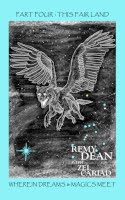
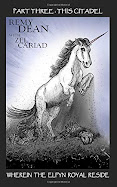
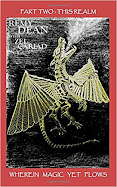

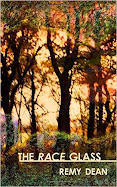
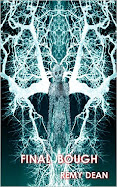





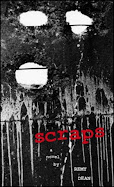





No comments:
Post a Comment